Male models in the fashion industry are groomed in the art of seduction. Newcomers must learn to thrive inside a hypersexualized paradigm. Teenage models referred by their agents to powerful photographers, often in their 40s or 50s, worry that resisting norms could result in being blacklisted or viewed as difficult. Now two fashion models -- Barrett Pall and Kai Braden -- tell The Advocate exclusively about a different kind of grooming, one they say was meant to confuse these young men as a renowned out photographer took advantage of them sexually.
In recent months, the discussion of consent between photographers and models has intensified. Last January, The New York Times reported on the alleged abuse of power by photographers Mario Testino and Bruce Weber, both said to have had a decades-long history of sexual harassment of models. Fifteen male models shared their stories with the newspaper, describing inappropriate sexual behavior. Pressure for unnecessary nudity, they claim, was an open secret within fashion circles. A separate report by The Boston Globe's Spotlight Team revealed harassment allegations against photographers Patrick Demarchelier, David Bellemere, Andre Passos, and Seth Sabal, and stylist Karl Templer.
In interviews with The Advocate, Pall and Braden allege they were sexually assaulted by Rick Day when they were teenagers. Both were virgins at the time. Both allege Day invited them to his studio and told them a series of strange impositions were entirely normal, which would lead to unwanted sexual acts they felt trapped in.
Since the Times report in January, companies have vowed to stop working with photographers accused of sexual harassment -- including Conde Nast, which publishes Vanity Fair, Vogue, and the LGBT publication them. The company's artistic director and editor of Vogue, Anna Wintour, wrote: "In light of these allegations, we will not be commissioning any new work with Bruce Weber and Mario Testino for the foreseeable future."
Alternatively, Dior has continued working with Templer in spite of accusations, having hired the stylist for a campaign this past spring. "I think in this difficult period it is wise to give Karl Templer the time to officially clarify the situation so that we can continue our collaboration in the very near future," creative director Maria Grazia Chiuri wrote after the Globe's report.
While statements like these are good PR, they provide only a temporary balm for a much deeper issue in the largely unregulated industry. Because most models are independent contractors, they are unable to unionize, which means on top of paying agent fees (roughly 20 percent) they usually foot the bill for their travel expenses, housing, and federal taxes. Due to the absence of regulation and labor protections, on top of a multilevel construct of hiring workers (most photographers and stylists are also freelancers), pinpointing legal liability for sexual harassment and assault is challenging. The balance of power is consistently in favor of agents, photographers, and the companies that hire them.
Being a young male model poses unique challenges. In addition to fears of being ostracized for coming out about harassment and assault, there is also a perceived standard of masculinity that countless men hide behind.
Following the Times report, out gay fashion model Barrett Pall uploaded a YouTube video called "Why It's Harder Being a Gay Model #MeToo." Though he mentions no names in particular, Pall adds that when you're starting in the industry, there is an "underlying agreement that you will kind of do what you have to do to book campaigns ... and a lot of that involves sexual acts, a lot of that involves sexual abuse."
Pall, who has appeared in numerous campaigns for Skechers, Puma, and Hyundai, among others, has been consistent in not naming names until now. Pall claims what Day did constitutes sexual assault, when during a November 2007 shoot, the photographer coerced him into taking erotic pictures and pressured him into a sex act.
Day has shot advertising campaigns for numerous clothing brands. His fashion spreads are published in nearly every magazine on the stands, including Elle, GQ, DNA, and Vogue Italia. He's worked with artists such as Taylor Swift, Liza Minnelli, Nigel Parker, Michael Strahan, and Robert Sepulveda Jr. While his inarguable talent is evident in fashion spreads, Day is also a well-known erotic photographer. In fact, his 2010 book Pioneers debuted at nunber 1 on the Amazon best-selling erotic book list.
Day first reached out to Pall eight months prior to the November 2007 shoot. The young model had caught the eye of Day, who messaged him via Model Mayhem, a website where up-and-coming models can be recruited for work -- Pall was going by "Barrett Adam" at the time. During these first exchanges, Day wrote that he was interested in shooting Pall for a new coffee-table book, as shown by screenshots obtained by The Advocate. (Day's coffee-table book, Players, was published in 2008.)
Pall said he was hesitant to reply to Day's messages, given that the photographer's portfolio consisted of numerous nude and seminude shots. Day facilitated him by confirming he was "not looking for a hook up ... but I find you very cute and would love to shoot a hot sexy shot of you," as confirmed by a screen shot obtained by The Advocate. Still, "something just didn't feel right" about Day's initial request, Pall says, so he decided to pass.
Coincidentally, a few months later Kevin Holloman arranged an initial go-see for October 2007, when Day took a few head and body shots of Pall. Holloman worked for B1 Model Management, Pall's agency at the time, which no longer exists. Holloman said there was "no concern" over sending the 19-year-old alone to the New York City studio. Holloman tells The Advocate he has never heard any complaints about Day and continues to send him models today (Holloman is now at BMG Models).
The go-see resulted in satisfactory photos. Soon after, Day followed up about scheduling a full shoot for November. At this shoot, Pall says, Day took erotic pictures and performed an unwanted sex act on the teenage model. It was Pall's second time meeting the photographer, whose resume dominated the then-19-year-old's own.
"I know there are countless guys who have shot with him," Pall says now. "Some have had fine experiences; others have gone in warned about what he is like and knew how to navigate his grooming tactics, predatory ways, and inappropriate behaviors."
Pall recalls thinking something was off when he arrived for the shoot at the studio, which turned out to be Day's apartment. "[Day] tells you that he is going to be doing your hair and makeup," admitting now that he's older, he can recognize this as "the beginning stages of him grooming you, to see how far he can push you with his words and touch." Tactics would intensify later, when Day pressured him to change in front of him, suddenly oiled Pall up with body oil, and repeatedly adjusted the model's underwear while seeming to accidentally graze his genitals inappropriately.
When Pall seemed uncomfortable, he says Day bragged about the number of successful male fashion models he'd shot -- like Lee Kholafai, who Pall "looked up to," and Chad White, who at the time was best known for his 40-page spread in the June 2006 issue of L'Uomo Vogue.
Pall said he was also impressed by the number of models in Day's portfolio who were signed with Jason Kanner, now the founder and CEO of Soul Artist Management, one of the leading model management companies in the business, whose clients include White, Pietro Boselli, Cordy Bond, Marcus Schenkenberg, and Tyson Beckford.
Pall was longing to sign with a manager who had status like Kanner, who was at Major Model Management at the time. Kanner confirms with The Advocate that he's had a professional working relationship for years with Day, to whom he sends many of his male clients, but given that he's currently in litigation for a case brought by model Jason Boyce (which also lists Bruce Weber as a defendant), Kanner chose not to comment on any allegations against Day.
Day's assistant Steve Benisty, who has since gone on to become a successful photographer himself, was present at the start of Pall's shoot. Pall says that Day sent Benisty home, and when he left, Day informed him they were going to do an underwear shoot for his upcoming book. When Pall showed reluctance to do the nude or seminude photos -- having told Day via Model Mayhem that he wouldn't do any -- Day asserted that taking erotic photos was the reason he was doing the shoot for free in the first place. Benisty never responded to The Advocate's request for comment.
After being given a pair of see-through red underwear, Pall says Day oiled the model's body down, then told him to start rubbing himself to keep him slightly erect to better fill out the underwear. "The purpose of these pictures are for him to create a book that you will gain absolutely nothing from," says Pall, who was in need of building his portfolio at the time. "He makes you feel like if you don't take these pictures, you won't get any of the images from the entire shoot."
Pall says Day would approach him to adjust his underwear, seeming to accidentally graze his genitals. The last time he approached, Day got on his knees, pulled out Pall's semi-erect penis from his underwear and began masturbating him. Pall says he was stunned and frozen, but felt pressure to pretend he "was OK with it" in order to get through and obtain the photos. Pall tells The Advocate he was a virgin and this act was the first time he'd done anything sexual with a man -- an experience he says was "robbed" from him. Day allegedly told Pall to ejaculate on his face, and when he was finished, he offered Pall a shower to clean off. The photo session, which Pall says seemed to go on forever, was finally over.
In messages exchanged on Model Mayhem in 2007 after the alleged incident, Pall expressed concern about the nude images being used publicly. Day wrote, "I hate it that you are upset with the way the shoot went. It was never my intention to make you uncomfortable." In further messages, Day suggested he could publish headless photos of Pall, making the model anonymous, implying there are other models who are headless and nude in his books. But Day later decided against it.
Pall often sounds conciliatory and friendly in the follow-up messages, something he attributes to a fear of retaliation. "Just looking back, I felt like it went too far," he wrote, "but I never felt uncomfortable, and I would love to work with you again." Day later confirmed he wouldn't use any nude photos and said he was "glad you are not mad or upset with me. That would be awful."
Pall did not tell Holloman or the other agents at B1 about the incident. Still, he claims they might have known that Day could be inappropriate on set and sent him anyway --something Holloman denies.
The first person Pall told was a friend, fashion stylist Carrie Goldberg, when they were studying abroad in Paris a few months later. "At that point modeling was new for him. He was figuring out where he can fit in the space," Goldberg tells The Advocate of the night Pall opened up to her about Day. "He was just starting out and knew very little of the industry overall. The last thing he expected was to be touched by anyone on set."
The Advocate reached out to Day, requesting a comment on all the allegations described by Pall. On April 11, Day responded, "Thank you for extending me the offer to tell my side of the story. I would prefer to meet in person and talk about this story." A few hours later, the photographer changed his mind about meeting, and followed up with "no comment."
In the ensuing years, Pall and Day continued to stay in touch -- a connection Pall said he maintained largely because he felt pressure to keep a decent relationship for his own sake as a working model.
In November 2008, Pall thought he'd seen a photo of Day's in Vogue and reached out to inquire about another shoot. "You sure you are ready for another session in front of my camera?" asks Day. "I think so," says Pall, adding, "I don't want to do anything nude frontal, but I love the way my pictures came out."
While Pall says there was repeated sexual harassment by Day at further shoots, the model says he stopped it before they could escalate. Pall adds that since the 2007 shoot, he's done other nude shoots -- including on separate occasions with photographers Tony Duran and Marco Ovando -- but says he has never done full frontal in an image since that day.
Pictured: The last time Pall shot with Day was in 2015, for a spread for Pump.
When Pall began uploading YouTube videos revealing the dark side of modeling, he says Day messaged him multiple times to apologize for making him uncomfortable but refused accountability.
In one email obtained by The Advocate, Day asked him to take part in his annual erotic calendar, Castings. "I had seen your video about the modeling industry and thought out of respect I would ask," Day wrote, adding, "But as I re-watched it I think you were talking a lot about me ... oiling you .... and 'selling images' to magazines without your permission." He continued, "First, you could have oiled yourself but most models are not quite as smart as you ... and you never asked."
A post would later pop up on Shit Model Management -- an Instagram account that highlights unhealthy aspects of being a model -- asking anyone who'd been harassed by Day to message the account holders. According to emails obtained by The Advocate, Day reached out to Pall soon after the post, accusing him of posting it. "I see what you have done with shit models," he writes. "And to be honest I [am] glad you are putting this out as I feel like I am being blackmailed as well. I think everything should be out."
Pall interpreted these emails as threatening, claiming Day's reference to "everything" includes leaking the 2007 erotic photos he promised to never publish. However, Day followed up with an apology for "misreading" Pall's lack of consent during the 2007 shoot. He also confirmed, "No matter what happens... I promise your pics will never surface." Day refused to comment about the messages to The Advocate.
Other models have had different experiences with Day altogether. Robert Sepulveda Jr., former fashion model and star of Logo's Finding Prince Charming, has worked with the photographer a handful of times over the last 10 years and vouches that Day has been professional on set, though he admits he can speak only of his own experiences.
"I never once felt intimidated or felt I had to do something I wasn't comfortable with," Sepulveda tells The Advocate about working with Day. "I always felt I could at any moment stop the photo shoot if I wanted, which in my case never happened. One must also understand that some of Rick's most well-known images, his style of photography, are of men generally nude or in very provocative positions. If both parties agree to work with each other and these provocative images are the end goal, then 'male models' would already understand what they are signing up for."
Sepulveda adds, "There is no doubt of Rick Day's genius and talent, but allegations of sexual harassment should never be taken lightly. I do hope this matter clears up for all parties involved."
Fashion model Kenneth Guidroz Page, who is signed with Soul Artist Management under Kanner, has lived with Day in his one-bedroom New York City apartment for short periods of time. "I've known Rick for some time now and have never heard him saying anything even close to inappropriate to anyone," he tells The Advocate. Page was tapped by Ben Eskridge, former vice president of the Ralph Lauren men's advertising division, to be the face of the brand's fragrance campaign. Eskridge abruptly left Ralph Lauren in December, a month before the Times article on Testino and Weber was published.
Pictured: Page with a group of friends, including Rick Day (second from left).
"Since the #MeToo movement started, I haven't been able to go a day without feeling triggered and I now recognize I am suffering from PTSD," Pall says. "Until you are in this position, you truly don't know what it is like to have your career hanging over you. The predators in the fashion and entertainment industry run in circles, help each other out, and have each other's backs. There is a reason why this systemic issue is only just coming out, and why it is not going to go away anytime soon."
The pressure for agents to maintain relationships with famous photographers is intense. Some activists argue that focus on maintaining a rapport comes at the expense of their models.
The question of loyalty is complicated when examining the ethics of agent-client relationships, and it has a complex history. In the 1970s, modeling companies started shifting their corporate structure from talent agencies to management companies. Under this umbrella, they are no longer held to standards requiring financial transparency, nor are they legally required to act in the best interest of their clients, other than what is contractually obligated. This restructuring allows companies to bypass laws limiting employment agency fees, arguing that they're providing models with management services on top of finding them work. While a multimillion 2002 class-action lawsuit challenged unfair agent commissions, resulting in a $22 million settlement, it did little for working conditions overall.
Sara Ziff is a model and founder of Model Alliance, an organization started in 2012 that is one of the few policy groups in the United States that has championed legislation to protect models. Ziff tells The Advocate that, until recently, there has been little to no pressure on the industry for basic regulation. She's heard of several cases where agencies have even sponsored work visas for young international models and later used it as leverage to hold them to one-sided contracts. She hopes to change all that.
"One aspect of the Model Alliance's work is to come up with novel approaches to securing legal protections for models, both through legislation and through a new program we have developed, which, through contract law, would require companies to enter into binding commitments to uphold a code of conduct," says Ziff. These kinds of requirements have proven successful in the agriculture and food industries because they enforce real consequences. "Participating companies are held to expel anyone who's found to be a harasser through a credible investigation to commit serious offenses, such as sexual harassment involving physical contact," she adds of the success in other industries.
Model Alliance plans on announcing more details of the program soon. Last year, the organization introduced the Models Harassment Protection Act in the New York State legislature -- a bill the group hopes will pass this year. The bill affords models protection against sexual and other forms of harassment in the state. Several years ago, the group spearheaded legislation mandating work permits for models under 18 and requiring a chaperone for models under 16. That law became effective in New York State in November 2013.
When the Rick Day post appeared on Shit Model Management, other stories surfaced. Kai Braden, international fashion model, coach, and actor who's trained numerous celebrities including DJ Vice and Zac Efron (whom he trained for his role in The Greatest Showman) was referred to The Advocate. Braden says he was assaulted by Day in 2006, when he was 18. At the time, Braden was signed with Wilhelmina Creative, an acting and artist management division of Wilhelmina Models that no longer exists. Today he's under the Sports & Fitness Division.
Braden tells The Advocate that the shoot started off uncomfortably. There was no assistant or team of hair and makeup people, and no space to change without Day seeing him. Still, after being impressed by Day's photos of other successful models, he felt he should continue for the sake of his career. "I became passive throughout the shoot, letting things go even if I felt extreme discomfort," he says. For one look, Day gave him tiny white shorts and suggested that he get semi-erect to fill in the shorts. Like in the shoot with Pall, Day oiled Braden's body. But later in the shoot, Braden says Day turned physically aggressive.
He alleges Day pinned him against the wall with his "hand around my neck" and his "mouth to ear." When Braden started to panic, Day allegedly told him "it was OK, that I should just relax."
"I remember he asked if I had ever had sex with a guy before, and I told him I had never had sex period," the model says. Day, whose fingers were on Braden's anus, "seemed to ease off when I told him that." Braden claims he was pinned to the wall for at least two minutes until he eventually pushed the photographer off. "He seemed to have gotten the picture, and we wrapped up the shoot," Braden says. "I tried to get out of there as quick as I can and keep my cool."
At the time, Pervis Taylor was also signed with Wilhelmina Creative and worked in the office for extra money. He remembers Braden being visibly shaken in the office when talking about the shoot with Day.
"Myself and another person tried to find out what happened," Taylor tells The Advocate. "I asked [Braden], 'Why did you take pictures in your underwear? He was like, 'Oh, he suggested I take pictures in my underwear.'" Taylor says he and Delancey Birzin, a booker at Wilhelmina Creative at the time, were concerned for Braden.
Birzin, who now works as an art director for television, hardly remembers the 2008 incident. "I don't remember the day," he says, adding, "I do remember Kai having an issue with a photographer, but I can't recall the specific details."
Braden says he later confided in his agents at Wilhelmina, telling them Day was "touchy-feely," but still not going into specifics about the assault. He remembers one of them saying something to the effect of, "Yeah, we know,... Rick is like that with guy [models], but he takes great pictures."
Both Pall and Braden have chosen to share their stories not only to shed light on the mistreatment of young models in the industry, but also to act as a springboard for change. Pall has since quit the modeling industry.
"I know a lot of people will say, 'Why didn't you just quit?'" Pall says. "But the truth of the matter is the majority of us do this to pay for school, help support our families as best as possible, and if you play the game right, there is the chance to make a lot of money. It's an industry that constantly dangles a carrot in front of you but then moves it a little farther, so you feel as if you have to keep doing things you are not comfortable with, and after years devoted to this career and industry, you feel as if it's too late to start something new."
Pall adds, "A photographer should have never felt comfortable enough to come up to me in the first place and repeatedly put his hands on my body without my permission, let alone sexually violate me."
Pall argues that the silent recruitment for erotic photo shoots among young male models should never be viewed as standard practice when building one's portfolio. The system, perpetuated by photographers and a small minority of modeling agents who send them clients, creates a distorted understanding of consent between a subject and the photographer. He says this leads a young model to think it's what they must endure to get ahead in the fashion world. It is not.
"It would have been easier to not come forward with Rick's name, keep myself out of this, but his lack of responsibility with this experience is what is leading me to come forward with my story," Pall says. "I refuse to let any predator I know off the hook because no one else should have to experience any form of abuse anywhere."
Day was informed about the allegations made by Pall and then by Braden. The Advocate followed up on April 11 and asked if his position was still no comment. Day replied, "Yes." The Advocate has since followed up for comment in July, just before publication, and Day has not responded.
The Advocate managing editor DAVID ARTAVIA received the 2018 Excellence in News Writing Award from the NLGJA, the association of LGBTQ journalists. The group's highest individual awards, NLGJA Journalist of the Year and the Sarah Pettit Memorial Award for the LGBTQ Journalist of the Year, were awarded to Ronan Farrow and The Advocate's editorial director Diane Anderson-Minshall, respectively.








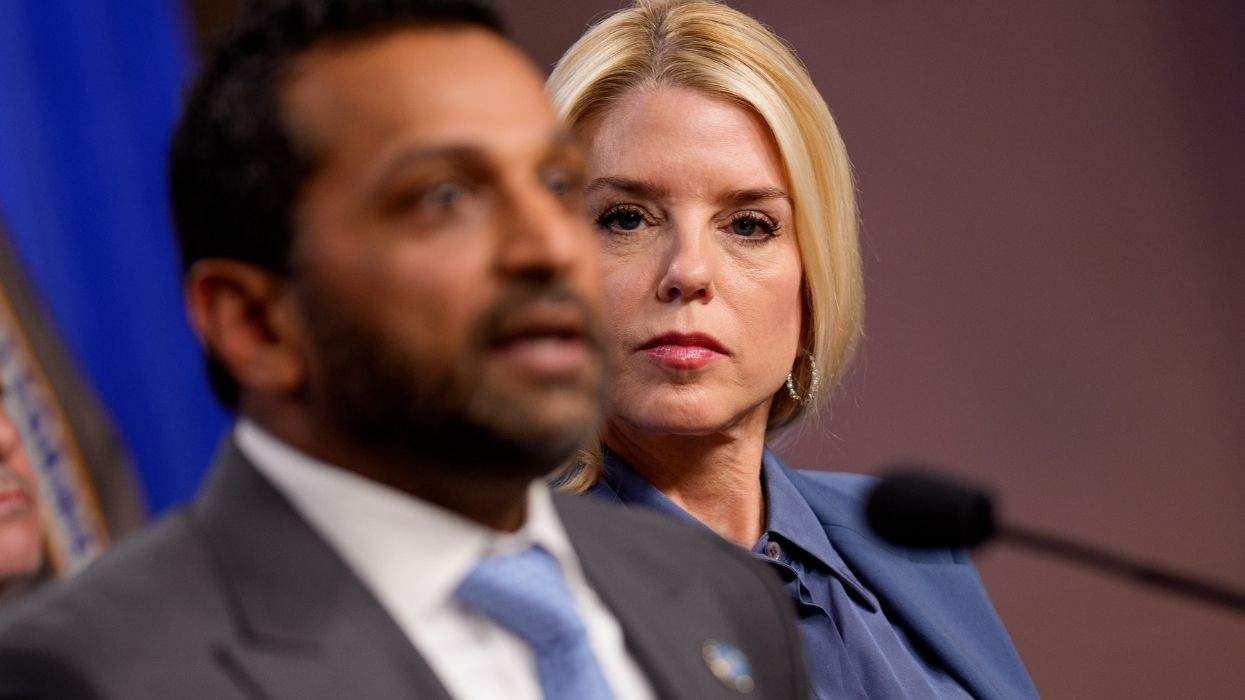
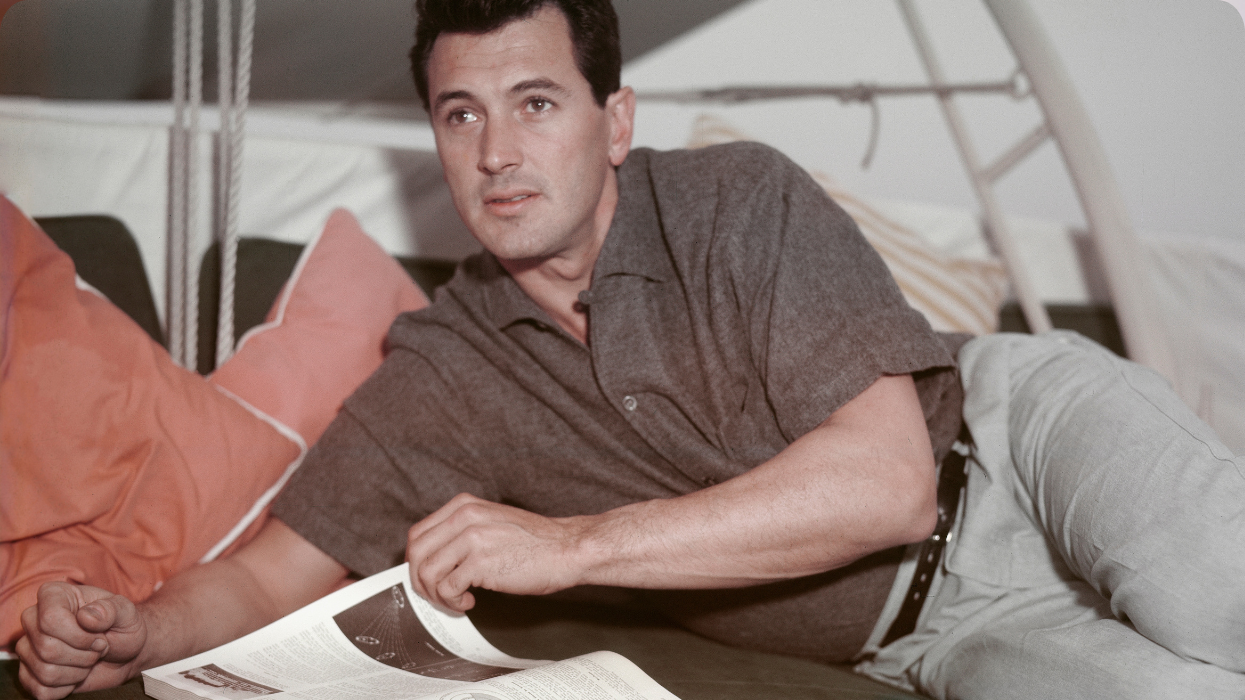
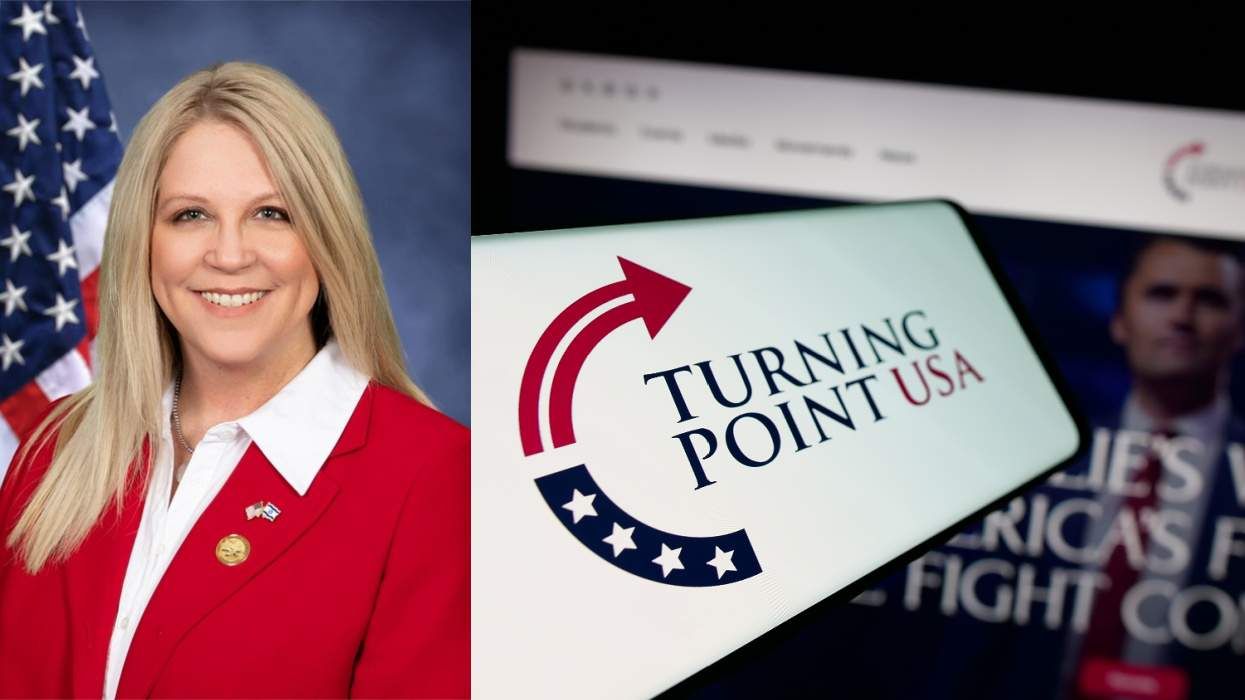

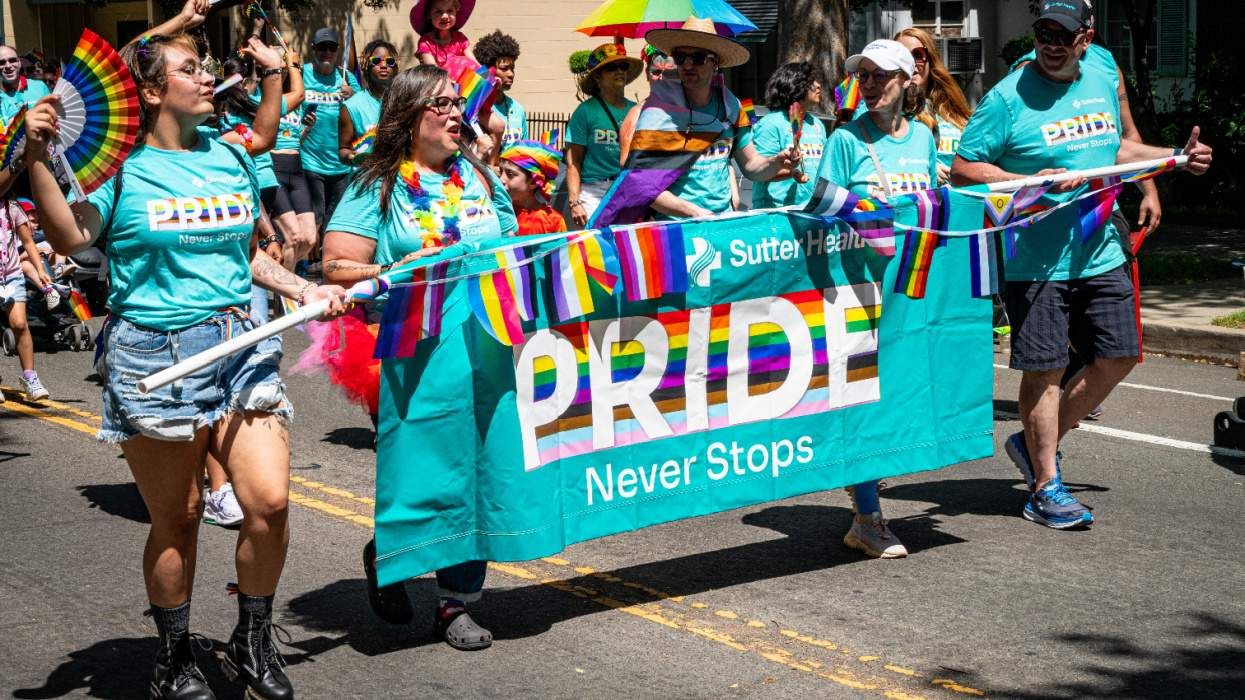
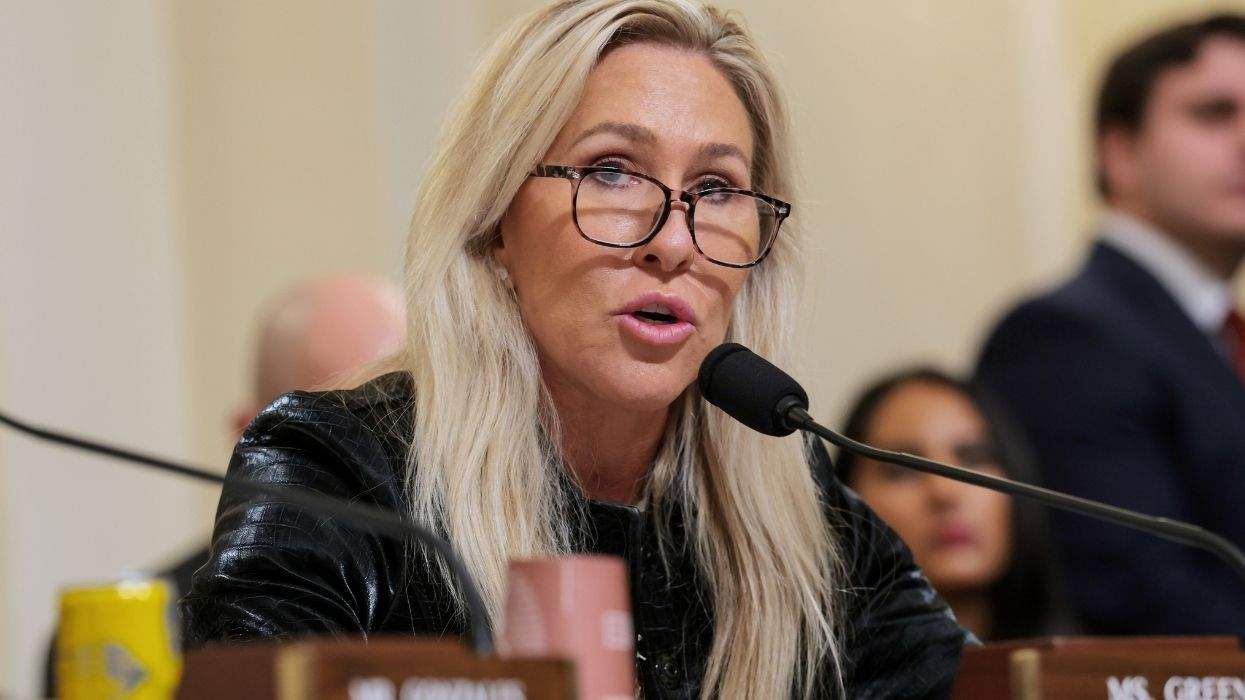
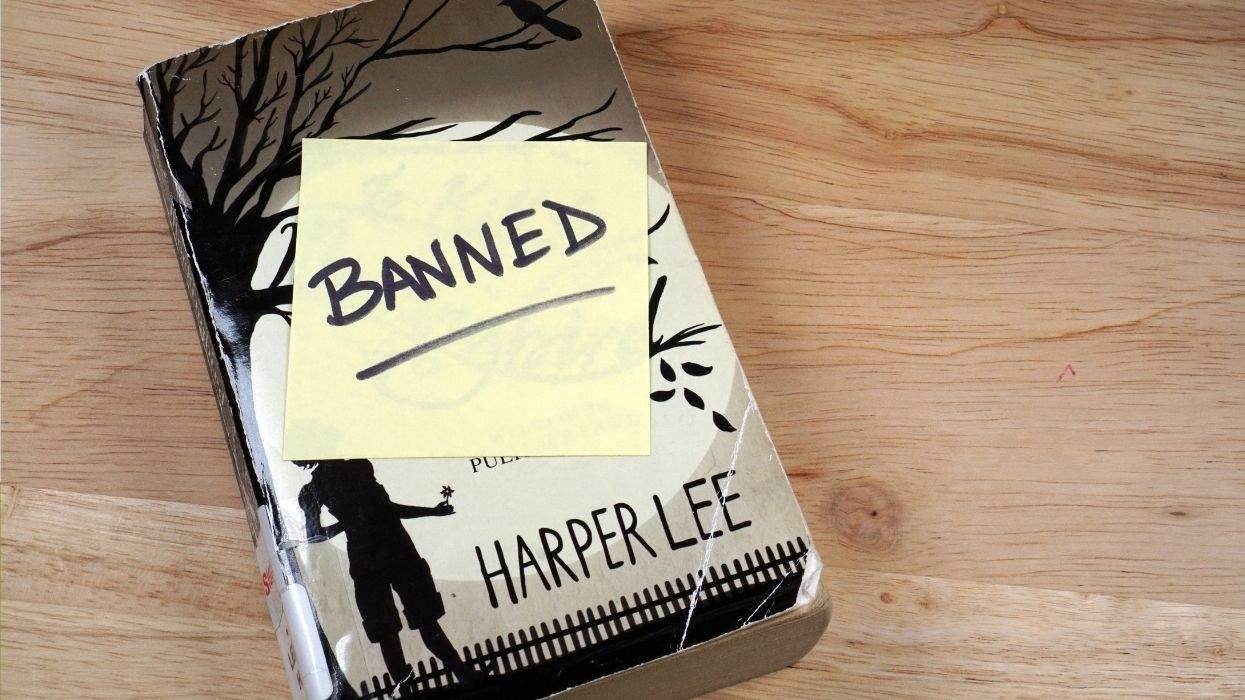













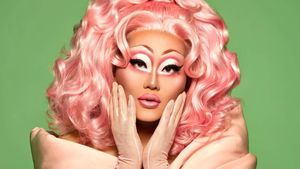
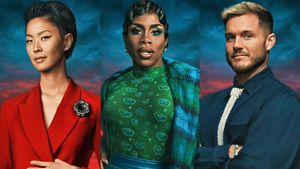



















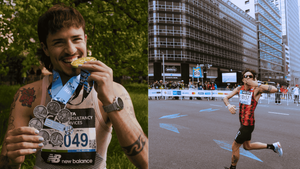


















Charlie Kirk DID say stoning gay people was the 'perfect law' — and these other heinous quotes